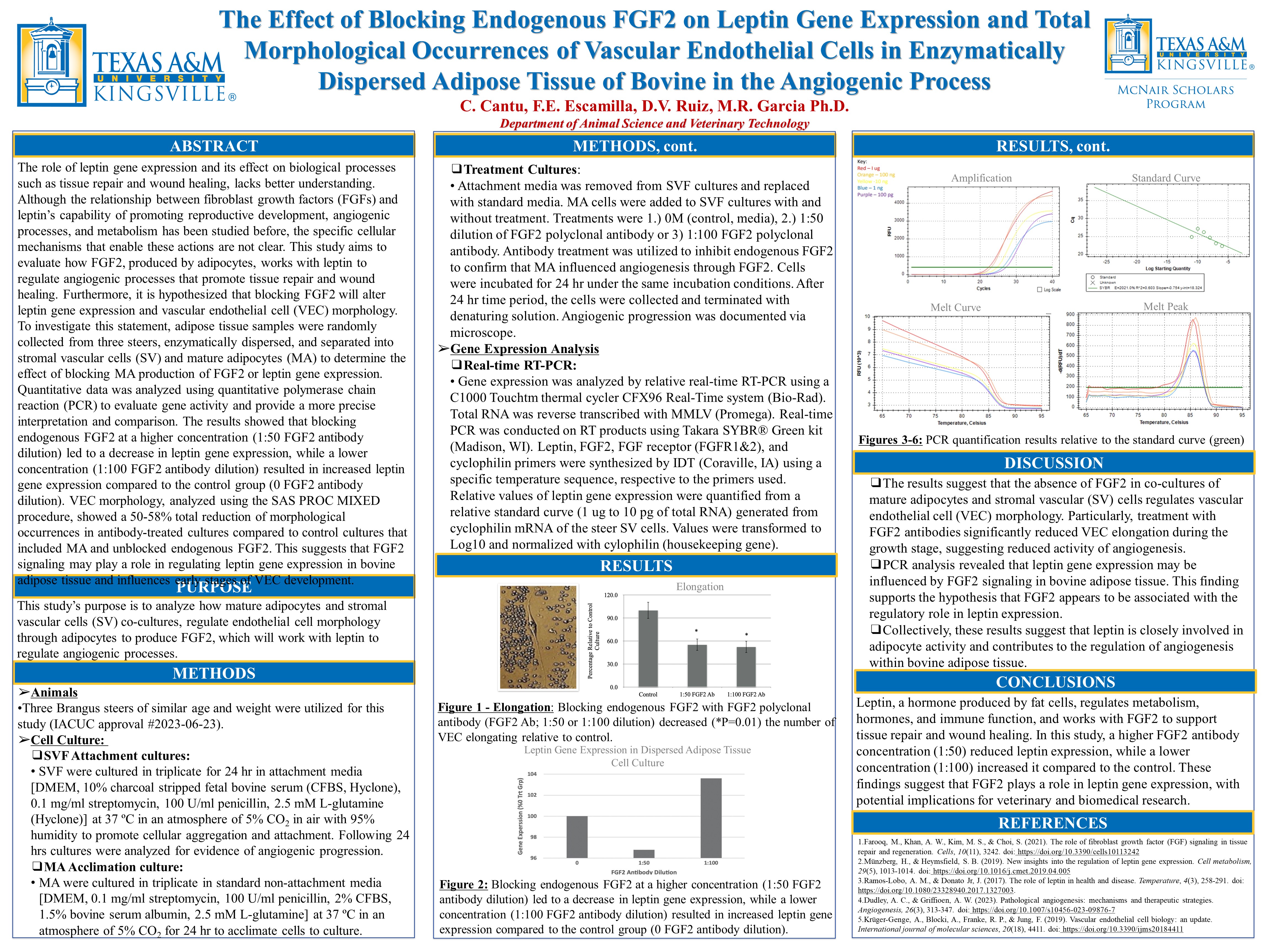The role of leptin gene expression and its effect on biological processes such as tissue repair and wound healing, lacks better understanding. Although the relationship between fibroblast growth factors (FGFs) and leptin’s capability of promoting reproductive development, angiogenic processes, and metabolism has been studied before, the specific cellular mechanisms that enable these actions are not clear. This study aims to evaluate how FGF2, produced by adipocytes, works with leptin to regulate angiogenic processes that promote tissue repair and wound healing. Furthermore, it is hypothesized that blocking FGF2 will alter leptin gene expression and vascular endothelial cell (VEC) morphology. To investigate this statement, adipose tissue samples were randomly collected from three steers, enzymatically dispersed, and separated into stromal vascular cells (SV) and mature adipocytes (MA) to determine the effect of blocking MA production of FGF2 or leptin gene expression. Quantitative data was analyzed using quantitative polymerase chain reaction (PCR) to evaluate gene activity and provide a more precise interpretation and comparison. The results showed that blocking endogenous FGF2 at a higher concentration (1:50 FGF2 antibody dilution) led to a decrease in leptin gene expression, while a lower concentration (1:100 FGF2 antibody dilution) resulted in increased leptin gene expression compared to the control group (0 FGF2 antibody dilution). VEC morphology, analyzed using the SAS PROC MIXED procedure, showed a 50-58% total reduction of morphological occurrences in antibody-treated cultures compared to control cultures that included MA and unblocked endogenous FGF2. This suggests that FGF2 signaling may play a role in regulating leptin gene expression in bovine adipose tissue and influences early stages of VEC development. By providing new insight into the interaction between FGF2 and leptin at the cellular level, this study contributes to a better understanding of their cellular activities, as well as encouraging advancements in medical treatments and therapeutic procedures for wound healing in both animal and human medicine.
Faculty Mentor: Dr. Michelle Garcia
Department of Animal Science and Veterinary Technology


